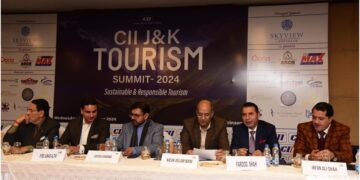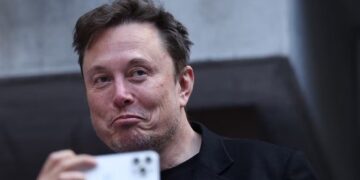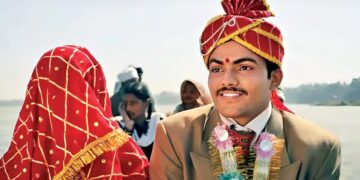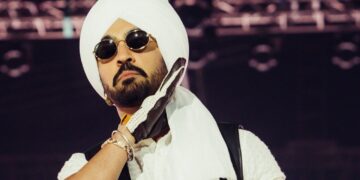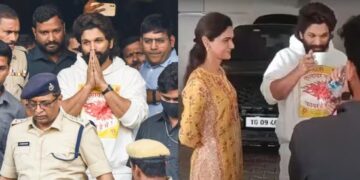Prime Minister Narendra Modi does not believe in apologising. But if he tenders an apology, there is a larger purpose behind it.
Before examining the reason(s) for Modi to say that he ‘bowed’ his head at the feet of Chhatrapati Shivaji Maharaj, who is “not just a king, but our aaradhya dev (revered deity),” and also for him to have extended his apology to those who worship the iconic Maratha king, it is worthwhile to go into the past.
Modi is known to have used the A-word only once prior to imploring from Malvan in Maharashtra’s Palghar district.
Just to recap, he was there as part of standard pre-poll ritual of laying foundation stones of mega projects before poll dates are declared. This time it was the Rs 76,000 crore Vadhvan Port and other projects.
Given reverence for Shivaji in Maharashtra, Modi aimed to mollify sentiments hurt due to the collapse of the 17th-century warrior king’s statue at Rajkot Fort in Sindhudurg district of Maharashtra within months of its inauguration.
The setting for Modi’s only prior public apology was Varanasi in 2014 when he was a first time Lok Sabha candidate.
In April 2014 Modi converted the simple ritual of filing nomination papers at the Returning Officer’s office into a veritable victory procession.
In early May, he sought permission from the local election officer for a rally in the Beniyabagh area within the city. After dithering initially, it was turned down, because another event was already cleared for the same day in that locality.
At 8.25 am on May 8, the day when the rally was intended, Modi tweeted an apology directly addressed to Mother Ganges even though no Twitter handle in her name was ever created, save one by an evidently small-time Barcelona-based importer.
“My profound apologies to Ganga Maa for not being able to perform Aarti today. Wish these people know that a Mother’s love is above politics.”
The tweet polarised the Twitterati. One admirer declared that Mother Ganges shall punish those who prevented a Hindu from paying obeisance to her.
Others hit back. One asked if this was Modi’s development model and another advised to take better care of his own mother.
The apology was merely a rhetorical statement but yielded desired dividends. Modi flew into the BHU’s helipad and embarked on a drive to his campaign headquarters.
No rally may have been permitted at Beniyabagh, but soon Modi became the ‘site’ and crowds thronged the streets in tens of thousands.
Lance Price, British writer and former aide to Tony Blair, was granted “unprecedented access” to write a book on the campaign (The Modi Effect: Inside Narendra Modi’s Campaign to Transform India). Piyush Goyal shared with Price, a video prepared by advertisement guru Piyush Pandey.
The ad for post-haste release on channels, featured clips of young men in the crowds flanking Modi as his cavalcade moved.
Price wrote that he could not escape the thought after watching the video that “it was more reminiscent of scenes from a Hitler Youth Rally than a democratic protest” against the denial of venue to Modi.
The apology triggered events which underscored the emergence of the Modi cult. Back then, few predicted it would reign supreme for a decade, before getting somewhat diminished, certainly not eclipsed, in the 2024 elections.
Eventually, Modi cocked a snook at the district administration when as PM-designate he visited Varanasi days after leading his party to an astonishing victory. That evening he performed Ganga Aarti while a horde of camera crews jostled for the best view to beam live visuals into millions of households.
Modi was never the one ready to offer an apology to anyone he wronged or was feeling aggrieved over his actions or utterances. But this did not prevent him from seeking one at a time when everyone, barring closest aides and unabashed supporters of his Hindu majoritarian demeanour, expected him to utter a few words expressing remorse or regret over events in Gujarat that took place after the Godhra carnage.
Besides political adversaries, sections of media and civil society, significant members of India’s industrial houses were repulsed by the state government and Modi’s stance during the riots and its aftermath.
In the annual summit of the Confederation of Indian Industries (CII), in April 2003 in Delhi, not only was Sonia Gandhi the guest of honour at its inaugural event, but themes of some of the sessions would have left Modi seething:
- Numbed Sensitivities: How Do We Dream Again?
- Social and Ethical Breakdown in India: What Shall We, The People, Do?
- Gujarat: Act of Faith or Breach of Faith?
A counter-offensive was organised. The Resurgent Group of Gujarat (RGG) was launched and took up cudgels on behalf of the Gujarat chief minister. They suggested to CII that unless the trade body made “suitable amends”, battle lines on the lines of ‘Gujarat versus CII’ could be drawn up. The RGG included many business leaders, including Gautam Adani, who later became significant moneybags in the ‘Modi narrative’.
Eventually, CII Director General, Tarun Das found himself in Arun Jaitley’s home and being grilled by the leader. Probing questions were asked, chiefly on the CII and key individuals. Days later, Jaitley informed him that Modi wanted an apology.
Modi did not get that. Das drafted a letter stating that CII regretted the misunderstanding. It was adroitly worded, and the media, if they wished, could make it out to be an apology of sorts.
It is important to note that Modi demanded a direct admission of guilt from CII over comments made by some of its members at previous conclaves. In normal circumstances, in democratic conventions, these would be permissible. But Modi took offence.
Modi’s point-blank refusal for even an expression of regret for post-Godhra events and consistent denigration of Muslims during state polls in 2002 and in this year’s Lok Sabha elections establishes his uncharitable opinion of India’s largest minority.
, Modi was asked whether he regretted the violence. Comparing his feelings to the occupant of a car involved in an accident, Modi said that if “someone else is driving a car and we’re sitting behind, even then if a puppy comes under the wheel, will it be painful or not?”
Of course it is. “If I’m a chief minister or not, I’m a human being. If something bad happens anywhere, it is natural to be sad,” he concluded.
Importantly, the puppy analogy did not factor that he was not a ‘passenger’ in Gujarat, but ‘driver’ of the car.
Modi’s over two-decade silence and refusal to seek pardon for the riots stands in contrast to Manmohan Singh who publicly apologised to his own community for the anti-Sikh pogrom in 1984 although he was not even in the Congress party then.
The closest Modi came to expressing regret for the events in 2002 was in September 2011 during the Sadbhavna Campaign he launched to project himself as the party’s PM face.
In a statement interpreted as his first sign of regret over the post-Godhra violence, he said the pain of anyone in the state is “my pain” and he had a duty to do justice for everyone.
But in the same campaign, he turned down the offering of a skull cap that a Muslim cleric made, making it evident that there had been no change of heart.
Paradoxically, Nitish Kumar mocked him: “In a country as diverse as ours, symbols must be respected. In order to maintain harmony with everyone, sometimes one has to wear a cap and sometimes one needs to sport a tilak.”
When it comes to rhetorical flourishes, like in Malvan, the Prime Minister is never miserly. In 2016 he sought “only 50 days” to establish that demonetisation was not in vain and that within the period he sought, he would “weed out ill-gotten wealth (black money) in the country.”
“Give me time till December 30. After that, if any fault is found in my intentions or my actions, I am willing to suffer any punishment given by the country,” he said with gusto. “If there’s any shortcoming after these 50 days, choose any chauraha (crossroads), and ask me to stand there, I will present myself…whatever punishment the nation decides for me, I will be accept it,” he added.
Eight years later, with unaccounted money remaining a major fiscal challenge, Modi is certainly not going to extricate his words from the dustbins. But the people acted, at least somewhat, as Mandate ’24 demonstrated.
The apology for the Shivaji statue collapse is unlikely to secure a pardon for the Mahayuti in the Maharashtra assembly elections. The incident is another instance of premature inauguration, whether it is the Pragati Mandal tunnels in New Delhi or the collapsing canopies in airports, these episodes may get interpreted by people as evidence of rampant corruption.
Modi refused to apologise for the 2002 riots, stating he would like to be judged by the “people’s court”. His 2014 apology was to a deity and not to the people.
So, why has Modi now requested the forgiveness of the people? Is this instinct reversal not a sign of nervousness becoming malignant in his persona?

